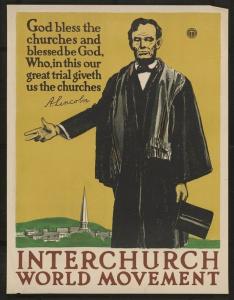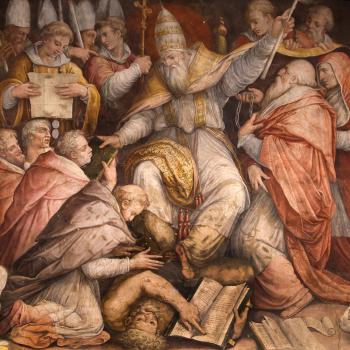by Janine Giordano Drake
American Christians are big on Christmas pageants that resemble Cinderella Stories. We like to reenact the story of an angel appearing to an innocent and faithful teenager, a young man submitting to his betrothed’s calling from God, and then an angel revealing God’s plan for the world to a bunch of humble shepherds and then a few wise men from far away. We like to imagine that we Christians are all like the shepherds, hardworking ordinary people who received the “good news” and then became paralyzed with awe.
Few of these plays dramatize Mary’s prayer for her baby in Luke 1, that prayer that the Messiah will “cast down the mighty from their thrones” and “lift up the lowly,” words that might serve as an annual invitation to churchgoers to check our own pride in our worldly power and status, and remember our calling (Luke 1:51-53). Most of us prefer the nativity story offered in Matthew, the story of good people evading the power of tyrannical rulers and hiding the Savior of the World in the unlikeliest of places. We Americans like to imagine that we are part of an underdog faith tradition, a beautiful Cinderella story that involves hiding the Savior of the world in a barn. We don’t make much room for the part of the incarnation where the Child of Humanity sets out to preach justice for the poor in a way that comforts the afflicted and afflicts the comfortable.
If we think about it for a minute, there’s no good reason we should prioritize the incarnation story in the gospel of Matthew over that of Luke, Mark or John. In fact, there is no no nativity story in books of Mark or John. Both of these authors introduce Jesus to us as the fulfillment of a promise which ran over the span of at least eight centuries. To these writers, Jesus is the consummation of a long and strained relationship between God and His people, and it is not that important to verify his precise earthly lineage. Both Mark and John emphasize the role of John the Baptist, a rebel religious leader, in preparing the world to hear Jesus’ message. A Christmas pageant which brought these books alive might begin with the story of Jews during and after the exile to Babylon, draw out the multiple meanings of the prophecies of Isaiah, and then show how Jesus taught his followers to understand them. Or, maybe the narrative would highlight John the Baptist as a prophet who stepped out of line with the dictates of religious authorities and how Jesus who followed up in this important work. If we think about it, the incarnation story most popular in the United States–the Christian faith symbolized as the creation of a new nuclear family–is no more “Biblical” than a pageant that centers on a radical prophet who repeatedly calls the leaders of their faith “hypocrites,” and then willingly lays down his life for his cause.
In the late nineteenth and early twentieth centuries, Christians all over the United States were writing and performing radical pageants of the incarnation. The most popular Jesus figure of the late nineteenth and early twentieth century was a scruffy carpenter, a working-class man who was fundamentally uncomfortable in the churches of the wealthy. As Upton Sinclair brought to life in They Call Me Carpenter (drafted c. 1910, published 1922), Jesus arrives in the world after he breaks out of the stained glass of a prominent cathedral. He then goes on a frustrating search for His people and finds himself arrested by the Klan. Early twentieth century Americans loved finding new ways to tell the story of Jesus. We should follow in this tradition.
Strange as it might sound, today’s Christmas pageants pay a heavy intellectual debt to John D. Rockefeller and his massive strike-breaking evangelistic campaign of 1919-1920.
Say what? I’ll break it down. In September of 1919, the Amalgamated Association of Steel and Tin Workers, a large union that had members across multiple states, decided to go on strike for union recognition, higher wages, and better working conditions. Over the previous eleven years, the heads of all the major Protestant denominations (represented as the Federal Council of Churches) supported collective bargaining rights and the rights of workers to a living wage. They even passed out leaflets with this message in their Social Creed of the Churches (1908). During the Great War and throughout his reelection campaign, Woodrow Wilson insisted that he fully agreed with the tenets of the Social Creed–at least theoretically, as a wartime national security measure. On the campaign trail, Wilson repeated, again and again, that all labor has dignity and workers deserve better. He earned the tacit support of the American Federation of Labor and this support helped maintain the unpopular war effort.
But, with the war over and the Red Scare in full swing, both church leaders and Democratic Party leaders began to waver on their support for unions. They especially wavered on their support for radical unions that had begun to organize highly skilled workers in unions with proletarianized workers. The bigger unions got, the more threatening they began to appear. It did not take long for the Great Steel Strike of 1919 to turn into a test to see who had the right to define the “normalcy” to which Americans would return. Steel strikers walked off the job from Pennsylvania to Colorado and stayed out through October,… November…. December…Wilson refused to intervene on behalf of workers. Elbert Gary, acting head of US Steel, refused to recognize the union. As strike funds grew smaller and wintertime hit hard in steel country, John Rockefeller, the fabulously wealthy businessman whose fortune arose from cheap industrial labor, had an idea.
Rockefeller would work with the Federal Council of Churches to orchestrate a massive evangelistic campaign, a church-planting campaign, and a series of entertainment circuits, throughout all of steel country. He would hire preachers, singers, dancers, and actors to put on all kinds of wholesome entertainment to distract from the steel strike in the news and suggest that “the churches,” not the steel strikers, represented the Gospel. And perhaps most of all, at least for our purposes, Rockefeller would sponsor elaborate Christmas pageants in the heart of steel country. That’s right, a union-busting Christmas pageant about a nuclear family and an apolitical Jesus was the centerpiece of Rockefeller’s union busting campaign. I encourage everyone to read more about it in the ninth chapter of my book, The Gospel of Church. Many thanks to our friends at Jacobin who helped me reflect on this last week.
There are many good ways to narrate the story of the Incarnation, and Matthew’s story is really no worse than the others. But, it might be worthwhile this year to think about other ways to share the good news of the incarnation. What if we thought of the incarnation from the perspective of the shepherds, people who find themselves in mind-numbingly boring and unfulfilling work, whose encounter with the Angel is not the end but the beginning of a journey? What if we follow those shepherds through Jesus’ ministry, see the miracles through their eyes, and see the “fulfillment of the Law” from the perspective of the poor who stood outside the Temple or the Roman court, asking for help in tough times? The incarnation of our Lord is good news to the poor. Let’s take the Christmas pageant as an opportunity to tell that story.


















